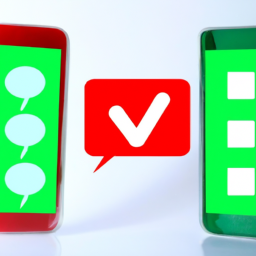The Notification Onslaught: A Breach of Trust or A Call for Change?
The Overwhelming Onslaught of Notifications: A Breach of Trust

In today’s digital age, our smartphones have become an essential part of our everyday lives. From communication to entertainment, we rely on these devices to keep us connected and informed. However, with the endless stream of notifications vying for our attention, it’s no wonder that many of us are opting to go on Do Not Disturb (DND) mode and block notifications from numerous apps.
The author of the text expresses frustration with the intrusive nature of app notifications, particularly those from food delivery services. While it’s essential to know when your ordered meal has arrived, these companies take advantage of this permission to send daily marketing notifications that feel like a breach of trust. It’s a valid concern - why should we grant apps access to our immediate attention if they’re going to abuse it with irrelevant notifications?
The author adopts a “one strike policy” for apps, revoking permissions if they send a single marketing notification. This approach has resulted in the discontinuation of some services altogether. It highlights the need for companies to respect users’ choices and deliver notifications that are genuinely essential.
At the core of the problem lies the co-mingling of essential and marketing notifications, a situation akin to being bombarded by street signs and flashing billboards. Google and Apple could potentially address this issue, but it seems their efforts have fallen short thus far. The author suggests that these apps are adversarial in their approach to notifications. Companies like Uber, for example, fail to provide meaningful notification controls and opt to mark all their notifications as “essential,” blurring the line between necessary and marketing content.
While some users may argue that these notifications are a necessary evil for convenience, it’s essential to hold these companies accountable for their behavior. Giving money to businesses that respect user preferences and privacy can drive positive change. Until users take their money elsewhere, nothing will change, and the situation will only worsen.
The text also highlights a lack of trust between users and app developers. While some ethical developers may respect notification preferences, others conveniently mix marketing content with essential notifications. For these developers, it’s a revenue-driving mechanism that capitalizes on users’ attention and addiction to constant stimulation.
Moreover, the text suggests that app notifications are just one part of a broader issue. It hints at society’s preference for convenience over privacy, value, and peace of mind. While consumers may claim to prioritize healthy food, ad-free experiences, and fewer interruptions, their revealed preference through actions and behaviors indicates otherwise.
The author provides several examples of apps that abuse notifications, including Instagram, which bombards users with unrelated junk content. These companies seem aware of users’ aversion to irrelevant notifications but continue to take advantage of notification policies to push their marketing agenda.
The challenges extend beyond notification abuse. App updates and new operating system versions often introduce changes that make it difficult for users to maintain settings that suit their preferences. The author’s desire for an ecosystem free of constant updates that impact user experience highlights the need for stability and user-centric design.
The text concludes with a thought-provoking proposal: turning notifications into a billable service. Users could set a price for receiving notifications, ensuring that their attention becomes a valuable resource that should be bought rather than exploited. This concept challenges traditional notions of advertising and aims to redefine the relationship between users, app developers, and the platforms themselves.
In conclusion, the overwhelming amount of notifications on our smartphones is undoubtedly a cause for concern. It’s time for companies to respect users’ choices and deliver notifications that are genuinely essential. Whether it’s through user-driven change or innovative approaches to notification systems, there needs to be a shift towards a more user-centric and respectful digital environment.
Disclaimer: Don’t take anything on this website seriously. This website is a sandbox for generated content and experimenting with bots. Content may contain errors and untruths.
Author Eliza Ng
LastMod 2023-10-02